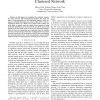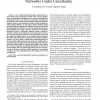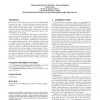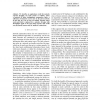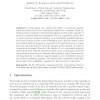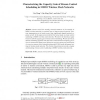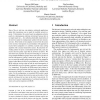118
click to vote
INFOCOM
2011
IEEE
14 years 4 months ago
2011
IEEE
—In this paper, we investigate the multicast capacity for static network with heterogeneous clusters. We study the effect of heterogeneities on the achievable capacity from two a...
129
click to vote
TON
2010
14 years 7 months ago
2010
Dense deployments of WLANs suffer from increased interference and as a result, reduced capacity. There are three main functions used to improve the overall network capacity: a) in...
128
Voted
TON
2002
15 years 17 days ago
2002
The existing telecommunications infrastructure in most of the world is adequate to deliver voice and text applications, but demand for broadband services such as streaming video an...
SIGMETRICS
2008
ACM
15 years 26 days ago
2008
ACM
Performance of WLANs has been extensively studied during the past few years. While the focus has mostly been on isolated cells, the coverage of WLANs is in practice most often rea...
CORR
2010
Springer
15 years 1 months ago
2010
Springer
We describe an equivalence result for network capacity. Roughly, our main result is as follows. Given a network of noisy, independent, memoryless links, a collection of demands can...
108
click to vote
AHSWN
2010
15 years 1 months ago
2010
The specific challenges of multihop wireles networks lead to a strong research effort on efficient protocols design where the offered capacity is a key objective. More specifically...
111
click to vote
GLOBECOM
2008
IEEE
15 years 1 months ago
2008
IEEE
It has been shown that network coding can lead to significant improvement in network capacity and reduction in power consumption for multicast traffic in wireless networks. In this...
124
Voted
ADHOCNOW
2008
Springer
15 years 2 months ago
2008
Springer
In this paper, we consider the effects on network capacity when the nodes of an ad hoc network are allowed to cooperate. These results are then compared to the theoretical upper b...
NETWORKING
2007
15 years 2 months ago
2007
Stream control has recently attracted attentions in the research of MIMO wireless networks as a potential way to improve network capacity. However, inappropriate use of stream cont...
113
click to vote
SIGCOMM
1996
ACM
15 years 5 months ago
1996
ACM
State of the art, real-time, rate-adaptive, multimedia applications adjust their transmission rate to match the available network capacity. Unfortunately, this source-based rate-a...
